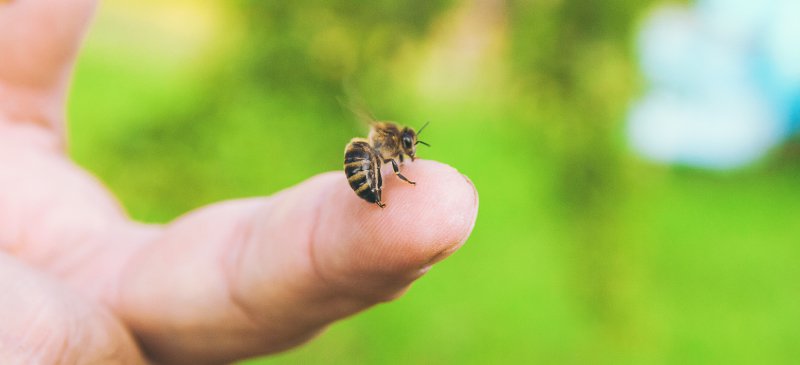Acharya Sushrutahas described various animal and insects poisons in his samhitas.
In day-today life many of us face the insect bite and suffer with this. Makshika Dansha – honey bee bite is the condition in which rarely there is
Signs and symptoms
- Kandu –Itching
- Shopha-swelling
- Daha-Burning
- Ruja- pain
When we see the signs above its clearly indicates Pitta Prakopa.
According to Ayurveda management of such bites is as follows- Kashayam( decoction)- prepared by –
- Dhanyaka Phala and Patra( coriander leaves and seeds)
- Tulasi patra and beeja (Basil seeds and leaves)
- Chandana kanda ( sandle bark)
Sevanam and Dhavanam ( intake and used for wash )

Dose- 50 ml internally twice or thrice a day, depends on severity of the bite.
Lepa ( Pack ) of mud collected from surrounding of Tulasi plant is applied to affected part.
How these medicines work?
- Decoction of Dhanyaka, Chandana and Tulasi internally pacifies pitta dosha along with vata .
- Chandana has pitta, daha and visha hara properties.
- Tulasi is vishaghna(antitoxic) and krimigna(anti-helmintics)
- Dhanyaka pacifies vata which results into analgesic activity.
- Tulasi has anti-inflammatory and anti-histaminic action.
- Dhanyaka has also anti-pyretic and diuretic activity. It gives relief from itching.
- Chandana has cooling effect it decreases inflammation.
Conclusion
Dhanyaka gives relief from itching due to diuretic property. Tulasi gives relief from swelling due to anti-inflammatory. It also gives relief from pain due to analgesic property. Chandana gives relief from burning due to antioxidant .
Dr. Smita, B.A.M.S



